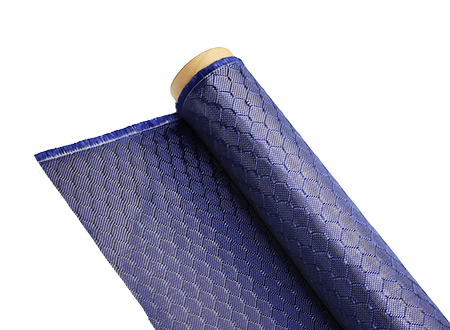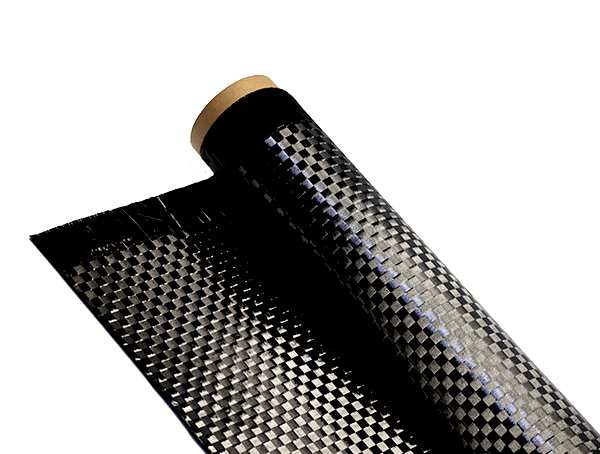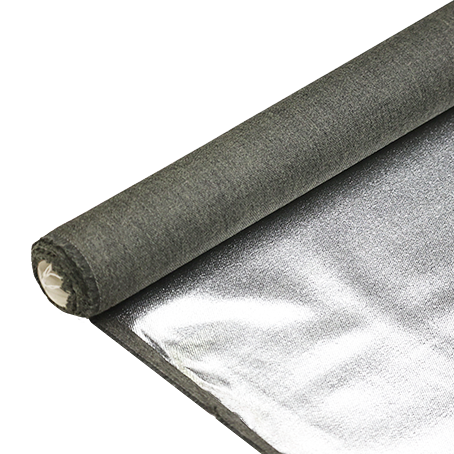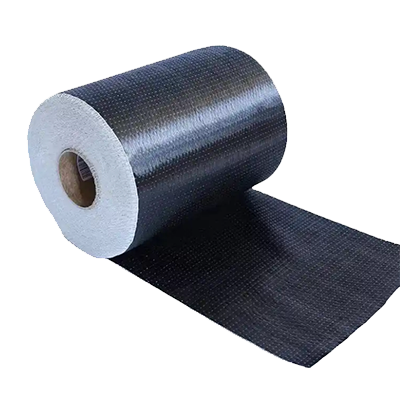Unleashing the Power of Carbon Fiber Fabric: A Game-Changing Material
-
Table of Contents
“Strong, lightweight, and corrosion-resistant – Carbon Fiber Fabric: The perfect choice for marine and offshore needs.”
Introduction
Carbon Fiber Fabric is a lightweight and strong material that has become increasingly popular in marine and offshore applications. Its unique properties make it an ideal choice for these industries, providing numerous benefits and advantages over traditional materials. In this introduction, we will explore the reasons why Carbon Fiber Fabric is the preferred choice for marine and offshore applications, and how it is revolutionizing the way we design and construct structures in these environments. From its strength and durability to its corrosion resistance and lightweight nature, Carbon Fiber Fabric offers a wide range of benefits that make it an ideal material for use in marine and offshore settings.
Benefits of Using Carbon Fiber Fabric in Marine and Offshore Applications
Carbon Fiber Fabric has become increasingly popular in the marine and offshore industries due to its numerous benefits and advantages. This lightweight and strong material has revolutionized the way boats, ships, and offshore structures are built and maintained. In this article, we will explore the various benefits of using Carbon Fiber Fabric in marine and offshore applications.
One of the main benefits of Carbon Fiber Fabric is its high strength-to-weight ratio. This means that it is incredibly strong and durable, while also being lightweight. This is especially important in the marine and offshore industries, where weight is a crucial factor. By using Carbon Fiber Fabric, the overall weight of a vessel or structure can be significantly reduced, resulting in improved fuel efficiency and performance.
In addition to its strength and lightweight properties, Carbon Fiber Fabric is also highly resistant to corrosion. This is a crucial factor in marine and offshore applications, where structures are constantly exposed to harsh saltwater environments. Traditional materials such as steel and aluminum are prone to corrosion, which can weaken the structure and lead to costly repairs. Carbon Fiber Fabric, on the other hand, is highly resistant to corrosion, making it an ideal choice for marine and offshore applications.
Another benefit of using Carbon Fiber Fabric in marine and offshore applications is its excellent fatigue resistance. This means that it can withstand repeated stress and loading cycles without experiencing any significant damage. In the marine industry, where vessels are constantly subjected to waves and rough seas, this is a crucial factor. Carbon Fiber Fabric can withstand these harsh conditions without losing its strength or structural integrity, making it a reliable and durable choice for marine and offshore structures.
Furthermore, Carbon Fiber Fabric is also highly customizable and can be tailored to meet specific design requirements. This is particularly useful in the marine and offshore industries, where structures and vessels come in various shapes and sizes. Carbon Fiber Fabric can be molded and shaped to fit any design, making it a versatile material for a wide range of applications. This also means that structures can be built with fewer joints and connections, reducing the risk of potential weak points.
In addition to its physical properties, Carbon Fiber Fabric also offers significant cost savings in the long run. While the initial cost of using Carbon Fiber Fabric may be higher than traditional materials, its durability and resistance to corrosion and fatigue mean that it requires less maintenance and repairs. This can result in significant cost savings over the lifespan of a structure or vessel. Furthermore, the lightweight nature of Carbon Fiber Fabric also translates to lower fuel costs, making it a cost-effective choice for marine and offshore applications.
Moreover, Carbon Fiber Fabric is also environmentally friendly. It is a sustainable material that can be recycled and reused, reducing the impact on the environment. In contrast, traditional materials such as steel and aluminum require a significant amount of energy and resources to produce, making them less environmentally friendly. By using Carbon Fiber Fabric, the marine and offshore industries can reduce their carbon footprint and contribute to a more sustainable future.
In conclusion, the benefits of using Carbon Fiber Fabric in marine and offshore applications are numerous. Its high strength-to-weight ratio, resistance to corrosion and fatigue, customization options, cost savings, and environmental friendliness make it an ideal choice for a wide range of applications. As technology continues to advance, we can expect to see even more innovative uses of Carbon Fiber Fabric in the marine and offshore industries.
Durability and Strength: How Carbon Fiber Fabric Excels in Harsh Marine Environments

Carbon Fiber Fabric has become increasingly popular in the marine and offshore industries due to its exceptional durability and strength. This lightweight and high-strength material has proven to be ideal for a wide range of applications in these harsh environments. In this article, we will explore why Carbon Fiber Fabric is the top choice for marine and offshore applications, specifically focusing on its durability and strength.
One of the main reasons why Carbon Fiber Fabric is ideal for marine and offshore applications is its exceptional durability. This material is known for its resistance to corrosion, making it perfect for use in saltwater environments. Unlike traditional materials such as steel or aluminum, carbon fiber does not rust or corrode when exposed to saltwater. This makes it a highly desirable option for marine structures, vessels, and equipment that are constantly exposed to the corrosive effects of seawater.
In addition to its resistance to corrosion, Carbon Fiber Fabric also has a high strength-to-weight ratio. This means that it is incredibly strong while still being lightweight. This is a crucial factor in marine and offshore applications, where weight is a significant consideration. The lighter the material, the less strain it puts on the structure or vessel, resulting in improved performance and fuel efficiency. This is especially important for offshore structures such as oil rigs, where weight can significantly impact stability and safety.
Moreover, Carbon Fiber Fabric is also highly resistant to fatigue and impact. In marine and offshore environments, structures and equipment are constantly exposed to harsh weather conditions and rough seas. This can cause significant wear and tear on traditional materials, leading to fatigue and failure over time. However, Carbon Fiber Fabric has a high fatigue resistance, meaning it can withstand repeated stress and strain without weakening. It is also highly impact-resistant, making it ideal for use in offshore structures that are subject to strong waves and currents.
Another advantage of Carbon Fiber Fabric is its ability to withstand extreme temperatures. In marine and offshore environments, temperatures can vary greatly, from freezing cold to scorching heat. Traditional materials such as steel and aluminum can expand and contract with temperature changes, leading to structural damage. However, Carbon Fiber Fabric has a low coefficient of thermal expansion, meaning it is less affected by temperature changes. This makes it a reliable choice for use in extreme weather conditions.
Furthermore, Carbon Fiber Fabric is also highly resistant to chemicals and UV radiation. In marine and offshore environments, structures and equipment are exposed to a variety of chemicals, including saltwater, oil, and other corrosive substances. Carbon Fiber Fabric has excellent chemical resistance, making it an ideal choice for these applications. It is also highly resistant to UV radiation, which can cause traditional materials to degrade and weaken over time.
In conclusion, Carbon Fiber Fabric is the top choice for marine and offshore applications due to its exceptional durability and strength. Its resistance to corrosion, fatigue, impact, extreme temperatures, chemicals, and UV radiation make it a highly desirable material for use in these harsh environments. Its lightweight and high-strength properties also make it a cost-effective option, as it can improve performance and fuel efficiency while reducing maintenance and replacement costs. As the demand for more durable and reliable materials in the marine and offshore industries continues to grow, Carbon Fiber Fabric will undoubtedly remain the top choice for years to come.
Cost-Effectiveness and Efficiency: The Economic Advantages of Carbon Fiber Fabric in Offshore Projects
Carbon Fiber Fabric has become increasingly popular in the marine and offshore industries due to its numerous advantages over traditional materials. One of the key reasons for this shift is the cost-effectiveness and efficiency of Carbon Fiber Fabric in offshore projects. In this section, we will explore the economic advantages of using Carbon Fiber Fabric in marine and offshore applications.
First and foremost, Carbon Fiber Fabric is known for its lightweight yet strong properties. This makes it an ideal material for offshore projects where weight is a crucial factor. The lighter the material, the less fuel is required to transport it, resulting in significant cost savings. Additionally, the strength of Carbon Fiber Fabric allows for the construction of lighter and more streamlined structures, reducing the overall cost of the project.
Moreover, Carbon Fiber Fabric has a longer lifespan compared to traditional materials such as steel. This means that structures made from Carbon Fiber Fabric require less maintenance and replacement, resulting in long-term cost savings. In the harsh marine and offshore environments, where corrosion and wear are major concerns, Carbon Fiber Fabric‘s durability makes it a cost-effective choice.
Another economic advantage of Carbon Fiber Fabric is its ease of installation. Unlike steel, which requires welding and heavy machinery, Carbon Fiber Fabric can be easily cut and molded on-site, reducing labor costs and installation time. This also means that structures can be built in remote locations, where transporting heavy machinery may not be feasible. The quick installation process also minimizes downtime, allowing for faster project completion and cost savings.
In addition to its cost-effectiveness, Carbon Fiber Fabric also offers efficiency in offshore projects. Its high strength-to-weight ratio means that structures can be designed to withstand heavy loads while being lightweight. This not only reduces the overall weight of the structure but also allows for the use of smaller and more efficient support systems. As a result, there is a significant reduction in energy consumption, leading to cost savings in the long run.
Furthermore, Carbon Fiber Fabric is highly resistant to corrosion, making it an ideal choice for marine and offshore applications. In traditional materials such as steel, corrosion can lead to structural damage and the need for frequent maintenance, resulting in additional costs. With Carbon Fiber Fabric, the risk of corrosion is significantly reduced, resulting in lower maintenance costs and longer service life.
The use of Carbon Fiber Fabric also offers flexibility in design, which can lead to cost savings in offshore projects. Unlike steel, which has limited design options, Carbon Fiber Fabric can be molded into various shapes and sizes, allowing for more creative and efficient designs. This flexibility also means that structures can be tailored to specific project requirements, resulting in cost savings by eliminating unnecessary materials and reducing waste.
Moreover, the use of Carbon Fiber Fabric in offshore projects can also have a positive impact on the environment. As mentioned earlier, its lightweight properties reduce fuel consumption, resulting in lower carbon emissions. Additionally, the longer lifespan of Carbon Fiber Fabric means that there is less need for replacement, reducing the amount of waste generated.
In conclusion, the economic advantages of Carbon Fiber Fabric in marine and offshore applications are undeniable. Its lightweight, durable, and corrosion-resistant properties make it a cost-effective choice for offshore projects. The ease of installation, flexibility in design, and positive impact on the environment further add to its economic benefits. As the demand for sustainable and efficient solutions in the marine and offshore industries continues to grow, Carbon Fiber Fabric is sure to play a significant role in shaping the future of these industries.
Q&A
Q: What is Carbon Fiber Fabric?
A: Carbon Fiber Fabric is a type of material made from thin strands of carbon fibers that are woven together to create a strong and lightweight fabric.
Q: Why is Carbon Fiber Fabric ideal for marine applications?
A: Carbon Fiber Fabric is ideal for marine applications because it is highly resistant to corrosion, saltwater, and UV rays. It is also lightweight and has a high strength-to-weight ratio, making it suitable for use in boats, yachts, and other marine structures.
Q: How is Carbon Fiber Fabric beneficial for offshore applications?
A: Carbon Fiber Fabric is beneficial for offshore applications because it can withstand harsh environmental conditions, such as high winds, extreme temperatures, and corrosive saltwater. It is also lightweight and strong, making it a suitable material for use in offshore structures and equipment. Additionally, its low maintenance and long lifespan make it a cost-effective choice for offshore projects.











